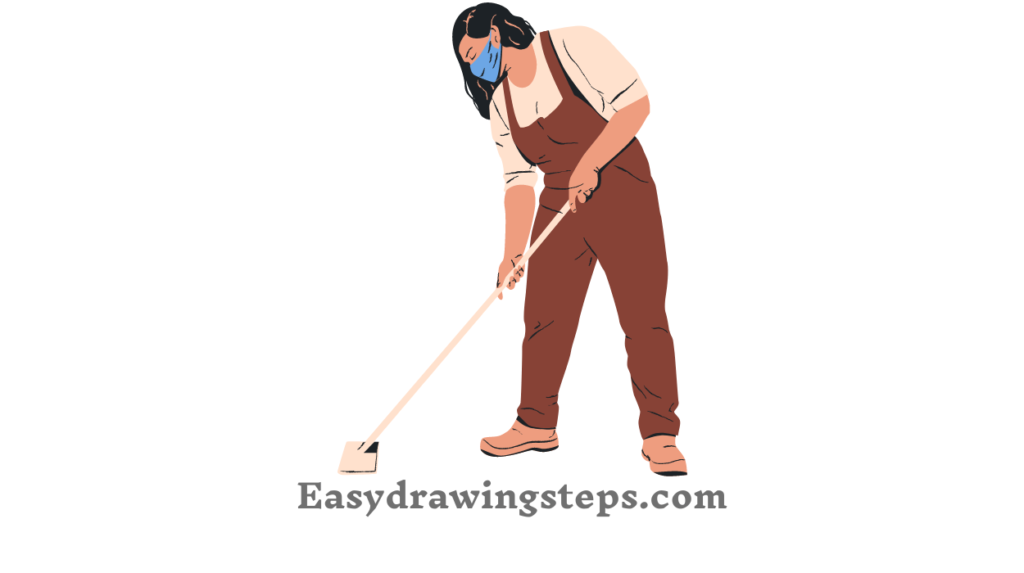Swachhata Drawing : Swachhata, or cleanliness, is a fundamental aspect of maintaining a healthy and sustainable environment. Drawing about Swachhata can be a powerful way to visually represent the importance of cleanliness and environmental hygiene.
Whether for a school project, awareness campaign, or personal satisfaction, this guide will help you create a compelling Swachhata drawing with ease.
Step 1: Start with a Simple Outline
Begin your drawing by sketching a basic outline of the scene you want to depict. This could be a clean and well-organized public area, a community participating in a cleanliness drive, or an individual maintaining personal hygiene. Use light pencil strokes to draft the main components of your drawing, such as bins, trees, and people.

Step 2: Define Key Elements
Next, define the key elements of your Swachhata drawing. If you’re illustrating an individual’s personal cleanliness, include items like a toothbrush, soap, and a clean sink. For a community scene, draw trash bins, people collecting garbage, and clean streets. Adding these details will help convey the message of cleanliness effectively.
Also Read : 10 Easy Steps to Draw Ganesh Chaturthi Drawing
Step 3: Sketch Figures and Objects
Add figures and objects to your drawing. For a personal cleanliness theme, draw a person brushing their teeth or washing their hands. If you’re focusing on environmental cleanliness, sketch people engaged in activities like litter picking or using waste segregation bins. Ensure these figures are simple and easy to recognize to clearly communicate the theme.
Step 4: Add Background Elements
Incorporate background elements to provide context to your drawing. This could be a clean park, a neighborhood street, or a public area with proper waste management facilities. Adding these elements helps set the scene and enhances the overall message of the drawing.

Step 5: Refine Details
Refine the details in your Swachhata drawing. Enhance the features of the figures, add texture to objects like trash bins, and ensure the cleanliness of the area is evident. This step is crucial for making your drawing visually engaging and clear.
Step 6: Incorporate Symbols of Cleanliness
Include symbols that represent cleanliness, such as recycling icons, clean water droplets, and green plants. These symbols reinforce the message of Swachhata and add a layer of meaning to your drawing.
Also Read : 10 Easy Steps to Draw Ganpati Bappa Drawing
Step 7: Prepare for Coloring
Once the pencil drawing is complete, prepare for coloring. Erase any unnecessary pencil lines and ensure the drawing is clean and clear. This preparation ensures that the colors will be applied smoothly and will not mix with pencil marks.
Step 8: Colour Your Drawing
Now, bring your Swachhata drawing to life with color. Use bright and clean colors to represent a fresh and hygienic environment. For a personal cleanliness theme, use light blues, greens, and whites. For an environmental scene, opt for vibrant greens for plants, blues for water, and various colors for trash bins and public areas.
Also Read : 10 Easy Steps to Draw Grapes Drawing
Step 9: Add Final Touches
Add final touches to enhance your drawing. This could include adding shadows for depth, highlighting certain areas, or adding small details like texture to the ground or background elements. These touches make your drawing more visually appealing and impactful.
Step 10: Review and Make Adjustments
Finally, review your Swachhata drawing and make any necessary adjustments. Check for consistency in color application and detail accuracy. Ensure that the message of cleanliness is clearly conveyed and that the drawing looks polished and complete.
Swachhata Drawing
- A Swachhata drawing focuses on depicting the importance of cleanliness and environmental hygiene. It can illustrate various aspects of maintaining cleanliness, from personal hygiene to community cleanliness drives. The drawing serves as a visual reminder of the significance of cleanliness in everyday life.
Vyaktigat Swachhata Drawing
- A Vyaktigat Swachhata drawing represents personal cleanliness and hygiene practices. This type of drawing can include scenes of individuals engaging in activities such as washing hands, brushing teeth, or using clean facilities. It highlights the importance of personal responsibility in maintaining cleanliness.
Swachhata Drawing Image
- A Swachhata drawing image typically features clean environments, such as tidy streets, well-organized waste bins, or people participating in cleanliness activities. This type of drawing serves as a visual representation of the broader concept of cleanliness and is often used in educational and awareness contexts.
Swachhata Drawing with Colour
- Adding color to a Swachhata drawing enhances its visual impact and makes it more engaging. Use bright and clean colors to depict a hygienic environment. For example, green can represent cleanliness in nature, while blue can symbolize clean water. The use of color helps convey the message of cleanliness more effectively.
Swachhata Drawing Pencil
- A Swachhata drawing pencil allows for detailed shading and a monochrome aesthetic. Using pencils of different grades can help create texture and depth in the drawing. This method is ideal for capturing intricate details and adding subtle variations in tone, which can highlight the cleanliness theme.
Paryavaran Swachhata Drawing
- A Paryavaran Swachhata drawing focuses on environmental cleanliness and the importance of keeping our surroundings clean. This type of drawing may depict activities such as recycling, waste management, and the preservation of natural resources. It emphasizes the broader impact of cleanliness on the environment and promotes eco-friendly practices.
By following these 10 easy steps, you can create a meaningful Swachhata drawing that effectively communicates the importance of cleanliness and hygiene. Whether you choose to focus on personal hygiene, community cleanliness, or environmental protection, these steps will guide you in producing a drawing that is both informative and visually appealing.
Swachhata Drawing FAQ
What is the best way to start a Swachhata drawing?
The best way to start a Swachhata drawing is by sketching a basic outline of the scene you want to depict. Begin with simple shapes and lines to represent the key elements, such as people engaged in cleanliness activities, trash bins, or clean public spaces. This initial sketch serves as the foundation for adding more details and refining your drawing.
How can I make my Swachhata drawing more impactful?
To make your Swachhata drawing more impactful, include clear symbols of cleanliness, such as recycling icons, clean water droplets, and green plants. Use bright and clean colors to represent a hygienic environment. Adding detailed elements like people actively participating in cleanliness drives or well-organized waste management facilities can also enhance the drawing’s effectiveness in conveying its message.
What colors are best for a Swachhata drawing with colour?
For a Swachhata drawing with color, use bright and clean colors to represent a fresh and hygienic environment. Shades of green are ideal for depicting clean and healthy nature, while blues can represent clean water. Light and vibrant colors for personal hygiene items and trash bins can also help in emphasizing the theme of cleanliness.
How can I use pencil techniques to enhance my Swachhata drawing?
To enhance your Swachhata drawing with pencil techniques, use different pencil grades for shading and detailing. Lighter pencils (like HB) can be used for softer areas, while darker pencils (like 4B or 6B) are ideal for shadows and deeper lines. Techniques such as cross-hatching and blending can add texture and depth, making your drawing more lifelike and engaging.
What is the focus of a Paryavaran Swachhata drawing?
A Paryavaran Swachhata drawing focuses on environmental cleanliness and the importance of maintaining a clean and healthy environment. It often depicts activities such as recycling, waste management, and the preservation of natural resources. This type of drawing highlights the broader impact of cleanliness on the environment and promotes eco-friendly practices.


